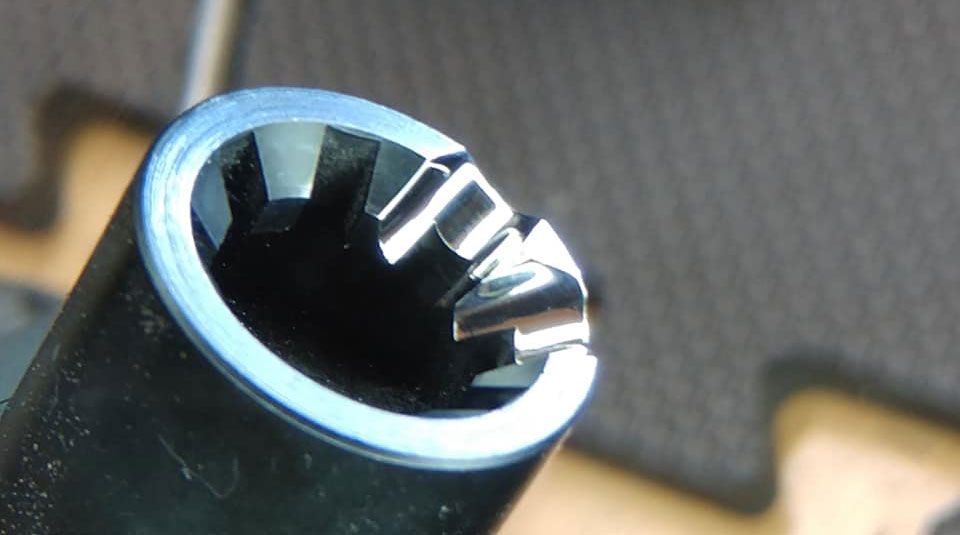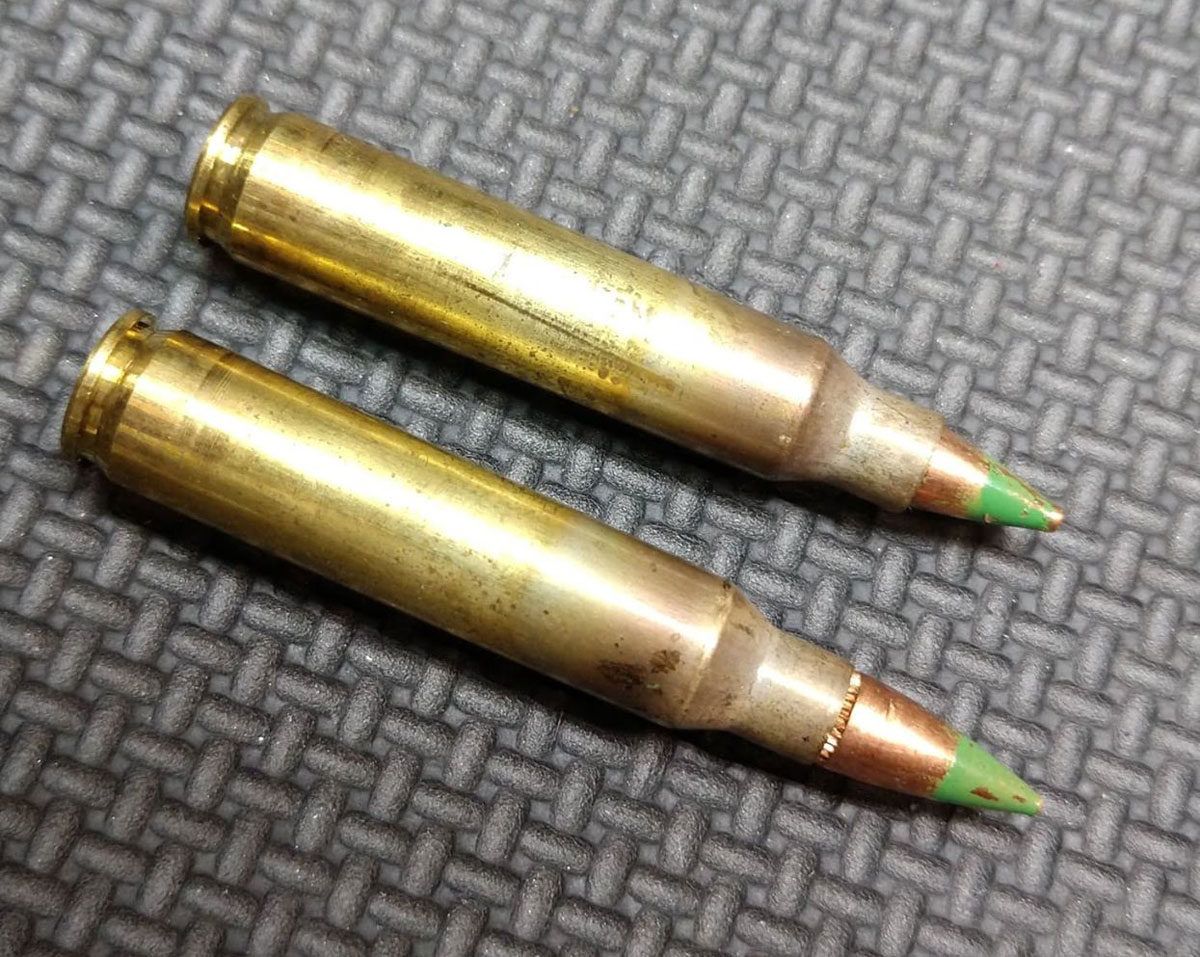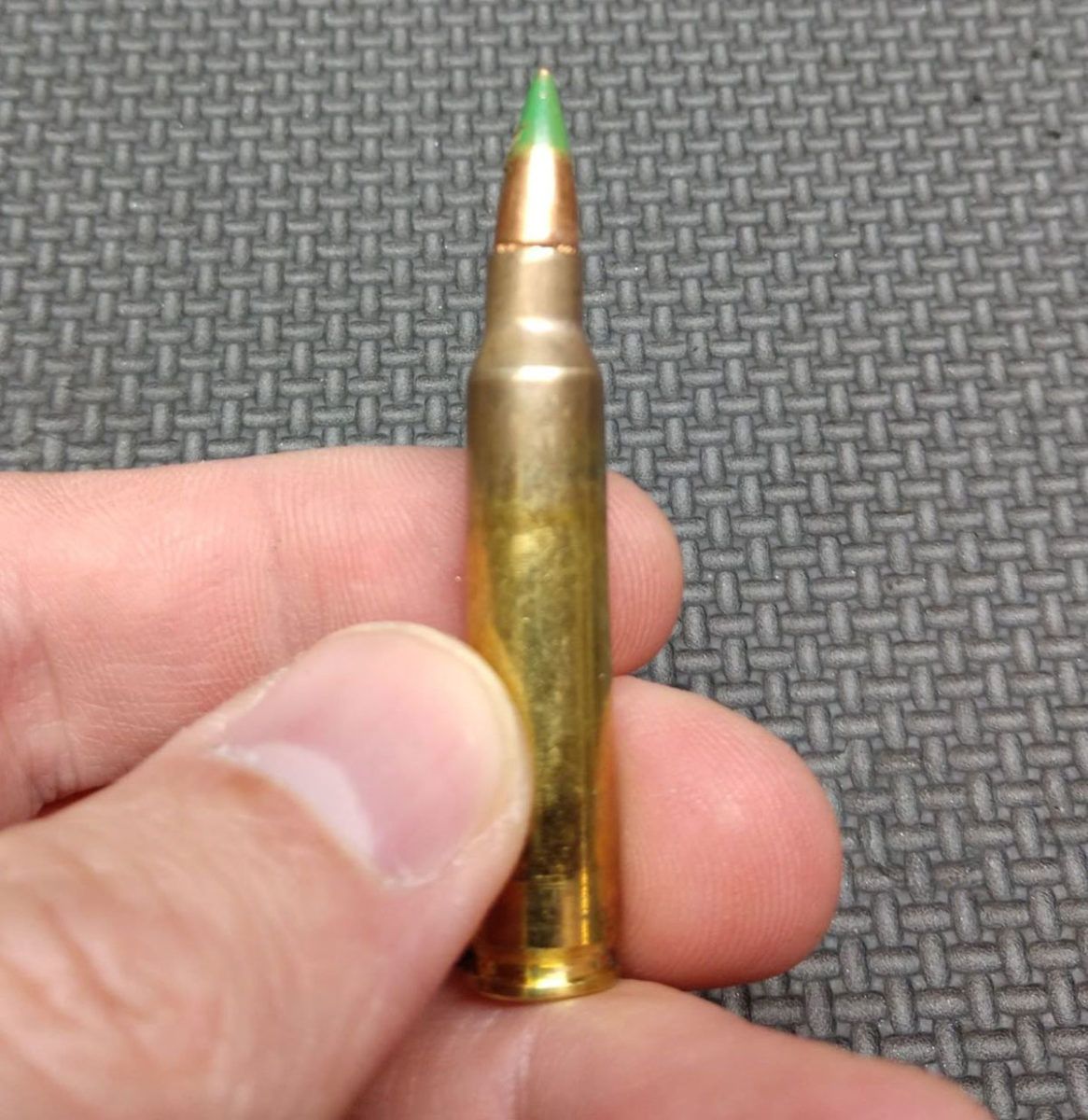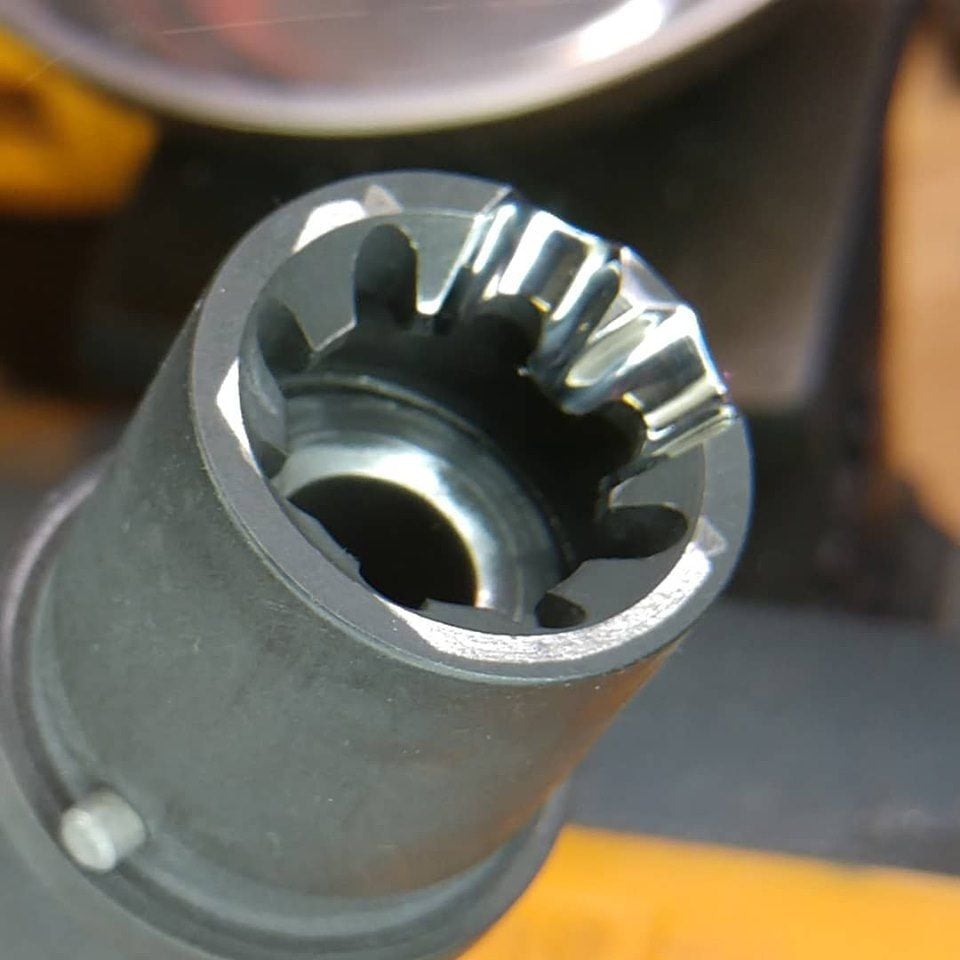How to Polish Feed Ramps on a Ar 10
![]()

We recently reached out to Chad Albrecht at School of the American Rifle to discuss AR-15 feed ramp problems. Issues with feed ramps can be more common than many builders think, especially when you're perhaps mixing and matching parts from different manufacturers.
ARBuildJunkie is blessed to have Chad as a resource to be able to ask occasional questions to. We're tremendously grateful for his generosity and willingness to share information with our readers. To learn more about him and his School of the American rifle, please be sure to check out our feature interview with him…or other more recent articles which you can find here:
- Common AR-15 Myths – School of the American Rifle
- AR-15 Gas System Issues – School of the American Rifle
- Headspace Gauge & the AR – School of the American Rifle
Also, please consider supporting Chad by following School of the American Rifle on Facebook, or via the Instagram.

Q: Chad, thanks again for your time. You mentioned discussing AR-15 feed ramp issues with our readers. The floor is yours…
Chad Albrecht, School of the American Rifle: When it comes to AR-15 feed ramp problems, one of the big problems with ARs is that there are actually two different types of feed ramps. You have the standard that was there with the beginning of the AR-15, M-16, M-16A1, A2…all the earlier guns when you had a full-sized barrel. Those had standard feed ramps.
That means you had the upper receiver, which had no ramps in it. Then you had the barrel extension where the ramps were built into the barrel. These ramps had no interface with the upper receiver. It was just a flat aluminum surface and then the ramp started on the barrel extension, which was made of steel.
Somwhere in the 1990s I believe, Colt designed the M4 feed ramps, where they took some of the material out of the upper receiver, cut two little ramps in it and then cut the ramps in the barrel extention a little further forward. This gave it a longer point for the magazine to allow the rounds to come out of the magazine and feed into the chamber. Supposedly, based on information that was published, this was done to increase reliability during full-auto.
What I've seen on the civilian side is that the M4 feed ramps can help reliability in a semi-auto when you're dealing with the variety of magazines that are on the market. Some of them don't have the same feed angles that a GI-issue magazine would. As far as ammunition, on the military side they are dealing with mostly full metal jacket. On the civilian side, you have hollow point, ballistic tip, full metal jacket, soft point…having that longer feed ramp will help between the variables of civilian available magazines and the variety of ammunition that can be loaded. Especially if you are getting into hand-loading, where the overall length can be a little bit different than some factory ammunition.
M4 ramps are an industry standard now, but few do it right. I don't mean to imply that it's intentional, but the tolerance stacking exists with a bunch of manufacturers. In almost every case Colt M4 ramps are perfect, unless the gun had parts swapped such as the upper or barrel.
Q: So, let's say I'm dealing with a non Colt…what am I looking for when it comes to AR-15 Feed Ramp Problems?
Chad Albrecht, School of the American Rifle: When the feed ramps on the upper receiver and barrel extension meet, you need to be sure there is nothing that allows the projectiles to hang up as they are being fed from the magazine into the chamber. If the steel barrel extension ramps overhang the upper receiver ramps like a roofing shingle, the projectiles can hangs up. That can cause reliability and accuracy issues.
Q: I've seen some people do some interesting things to fix AR-15 feed ramp problems…I would assume there is a right and wrong way to address the issue?
Chad Albrecht, School of the American Rifle: Some people, when they see it, they go hog wild and break out the Dremel while the barrel is installed onto the upper and everything is still tight. They just start grinding away with a Dremel, but you're really not supposed to take material that's built into the M4 ramps in the anodized portion of the upper receiver…you're not supposed to take material off of that. When you do that, you expose the softer aluminum underneath the surface and as the projectiles are being fed up, it can sort of 'woodpecker' away at it. It's sort of the same principle if you have a semi-auto pistol that has an aluminum frame and a steel barrel, you don't want to go grinding on the aluminum portion. You only want to modify the steel ramps on the barrel.
So, people do it the wrong way, because it's more difficult to do it the right way. To do it the right way, you have to remove some components off of the barrel. You have to loosen the barrel nut or rail system, pull the barrel out, do modifications, keep fitting it back and forth. You can't just do it in one fell swoop. You then put it back on and tighten everything up. Also, not everybody has the proper tools to do that. Sometimes it can be rather intimidating, even though it really is a rather simple task with the right tools. People just steer clear of it.
People assume that because "I'm buying a good barrel and I'm buying a good upper," those two parts may not play well together unless you do a little bit of fitting. When I do it, I take it a little bit further. Instead of just fitting things and making sure there is no overhang with the ramps, I go a step further and I polish them like a mirror.
What I'm doing there really isn't a breakthrough in the industry. People have been doing that kid of work on 1911s longer than I've been alive. There are factory produced barrels that already have those polished ramps. Centurion Arms does it. Mine look identical to theirs.
Q: Are there any quick and easy indicators that I may have AR-15 feed ramp problems? Metal filings or shavings perhaps?
Chad Albrecht, School of the American Rifle: On guns that have feed ramps that have raised burrs or sharp edges, you'll notice as those rough ramps interface with the projectile, interface with the brass casing, its shaving little pieces of material off every time it's feeding a round in.
You take the gun apart after a few thousand, rounds, if it has made it through without a malfunction, you'll see little pieces of brass and copper all inside the barrel extension. If it builds up bad enough, it can cause the ejector on the bolt to bind up. That can lead to malfunctions. If the gun has short or very tight headspace spec, it can cause the gun not to want to go into battery when it gets really dirty and fouled.
Q: I've heard that AR-15 feed ramp problems can also impact accuracy. Is this true, or is it more about function?
On the extreme circumstance, if you're looking for accuracy…having any sort of disruption when the rounds are being fed from the magazine into the chamber, anything that can cause the projectile to be nicked or knocked out of alignment, not sitting true in the casing, can cause inconsistencies on target.


So, if it's trying to feed a round and it jams that projectile back into the casing, depending on how hard it crimped, that will affect the pressure when the round is fired, and it will affect the consistency from round to round to round. When people complain about accuracy, one of the first things I look at in the gun is the feed ramp geometry and whether or not things hang up.
Q: So, if I think AR-15 feed ramp problems are the reason why I am having accuracy issues, how can I tell?
One thing an end-user can do if he or she is suspecting that feed ramps are causing an issue with accuracy is they can single load. Individually load rounds into the chamber and fire at the same pace or cadence you do in semi-auto, then turn and do the same thing in semi-auto, at the same pace. Pause between rounds and do as "scientific" a side-by-side comparison as you can.
Normally if you have problems with feed geometry, the magazine will feed the rounds and cause a disruption in consistency, and you'll see a huge difference in accuracy. The gun is always going to be more accurate if you single feed just because there is less disruption across the board, but if you see a huge difference between single fed groups and magazine fed groups, then you can start to draw some conclusions that your feed geometry is a little messed up, or something is hanging up.
Q: So, if I've read this far, I might be inclined to grab an AR and take a look. What should I be looking for? And if I do find a problem, what is my best course of action?
Chad Albrecht, School of the American Rifle: One of the things that I touch on is that you can take a live round, and if you're in an environment where you can do it safely, you can take the projectile and run it up the ramp, if it feels like it is hanging up on anything…sometimes it's just the cutout where the lug of the bolt goes though, it can have a really sharp edge on it, and as you're feeding the projectile you can feel it hang up and remove material.
Basically just take something that you can use like the back of a ball point pen, or a cleaning swap or the tip of a projectile and just see if things are hanging up. If you are seeing a transfer of material…if you take a projectile and run it up the ramps and you see copper being displaced onto the feed ramps, then more than likely they're just rough. You're not having anything truly hanging up. But it's one of those things that's really a "touch and feel" thing. You really have to make a good judgement call on how it sounds and how it looks.
"If you're skilled and have the proper tools…"
At that point, if you're skilled and you have the proper tools, pull the barrel off, and never take any cutting stones to it, but you can take some polishing bits, and basically get brave and break out the Dremel. But, if you're not good with a Dremel and you don't have a steady hand, this might be one of those situations where you would probably want to pay someone who specializes in this kind of work to do it.
It's not expensive if you can find someone who does this kind of work on a consistent basis. It's something that I actually plan on offering in the near future as a service. I'm not trying to drive any business my way because I am not doing it yet, but anyone who is competent as a gunsmith should be able to modify feed ramps if someone can't do it. If they're a gunsmith and they're worth their salt, they should be able to do it for a nominal fee.

Q: Overall, as far as potential AR issues, where do feed ramp issues rank to you?
Chad Albrecht, School of the American Rifle: Headspace is usually the first thing I talk about. This is the second thing, other than making sure the gun isn't grossly over-ported. AR-15 feed ramp problems would be my number two. Most all ARs on the civilian market now, unless they are older, have the M4 ramps. It's most certainly something we address in my armorer's classes…what to do, what to look for, how to remedy the issue.
###
brownriggouggialk.blogspot.com
Source: https://www.arbuildjunkie.com/ar-15-feed-ramp-problems-school-of-the-american-rifle/
0 Response to "How to Polish Feed Ramps on a Ar 10"
Post a Comment